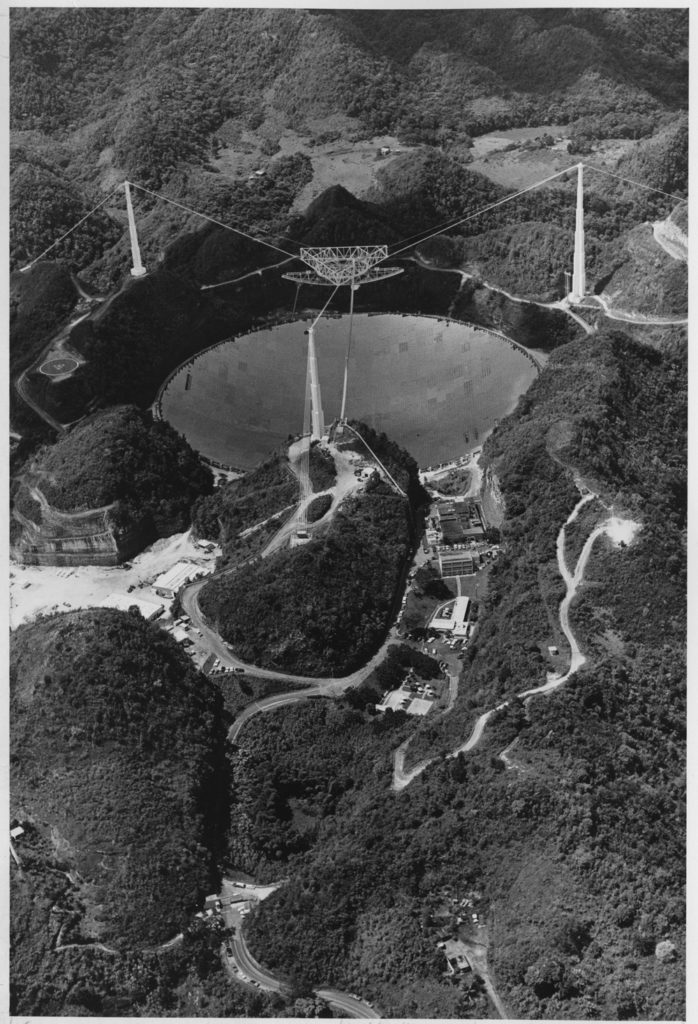The National Astronomy and Ionosphere Center, also called the Arecibo Observatory, was constructed by Cornell University from 1960 to 1963 under the leadership of Prof. William E. Gordon (Ph.D. ’53). Named for the municipality in which it is located in highland Puerto Rico, Arecibo has the world’s largest single-unit radio telescope and has been the site of many astronomical discoveries. Although it no longer manages the radio telescope station, Cornell is linked to Arecibo through science fiction; Carl Sagan used the observatory as the setting for a good part of his novel, Contact. Indeed, the movie, Contact, was filmed there (as were Survivor and the “Little Green Men” episode of the X-Files).
In 1974, a radio transmission called the Arecibo Message was broadcast from the observatory toward a destination about 25,000 light-years away in hopes of communicating with extraterrestrial life. Dr. Frank Drake wrote the message with input from Sagan. Formerly a Cornell University professor and director of the observatory, Drake is most famous as the author of the Drake equation, a formula for estimating the number of extraterrestrial civilizations in the Milky Way galaxy. While the Arecibo Observatory is capable of receiving radio signals from distant star systems, it has never received signals from extraterrestrial beings.
